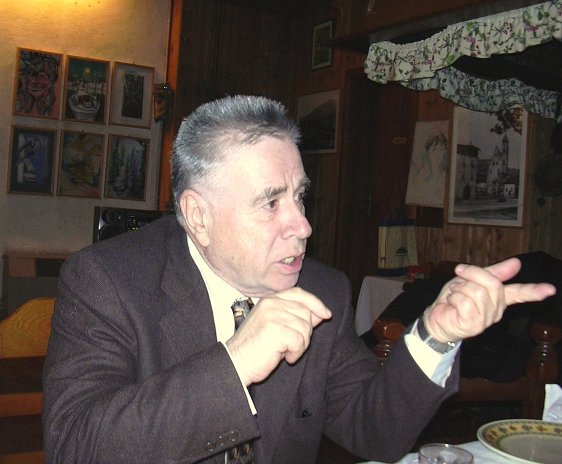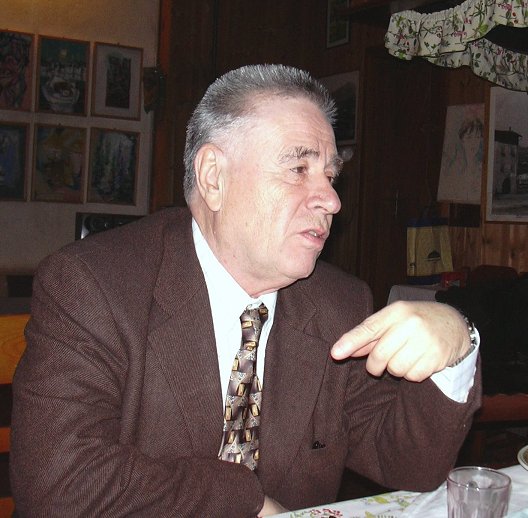

The research team at the MPQ and University of Munich was the second group outside the USA to report BEC. The evidence for condensation emerged from time of flight measurements. A sharp peak in the velocity distribution was observed below a critical temperature. © Immanuel Bloch, (Quantum, Mainz)
So called Gross-Pitaevskii equation is the basis for
the practical description of Bose-Einstein condensate in diluted gases. It
resembles much the “ordinary" Schrödinger
equation, apart from an interaction term.
And this term makes the
difference: only including the interaction
between separated particles (attracting, repulsing) one gets a real,
experimental situation.
 |
Lev, the wavepacket describing an electron diverges in time. Does it result from a special, Gaussian form of the packet? |
- Lev, tell me what ideawas behind Your famous equation? |
 |
Photos are from professor Pitaevskii’s 70th birthday dinner. Thanks! Asking questions: GK